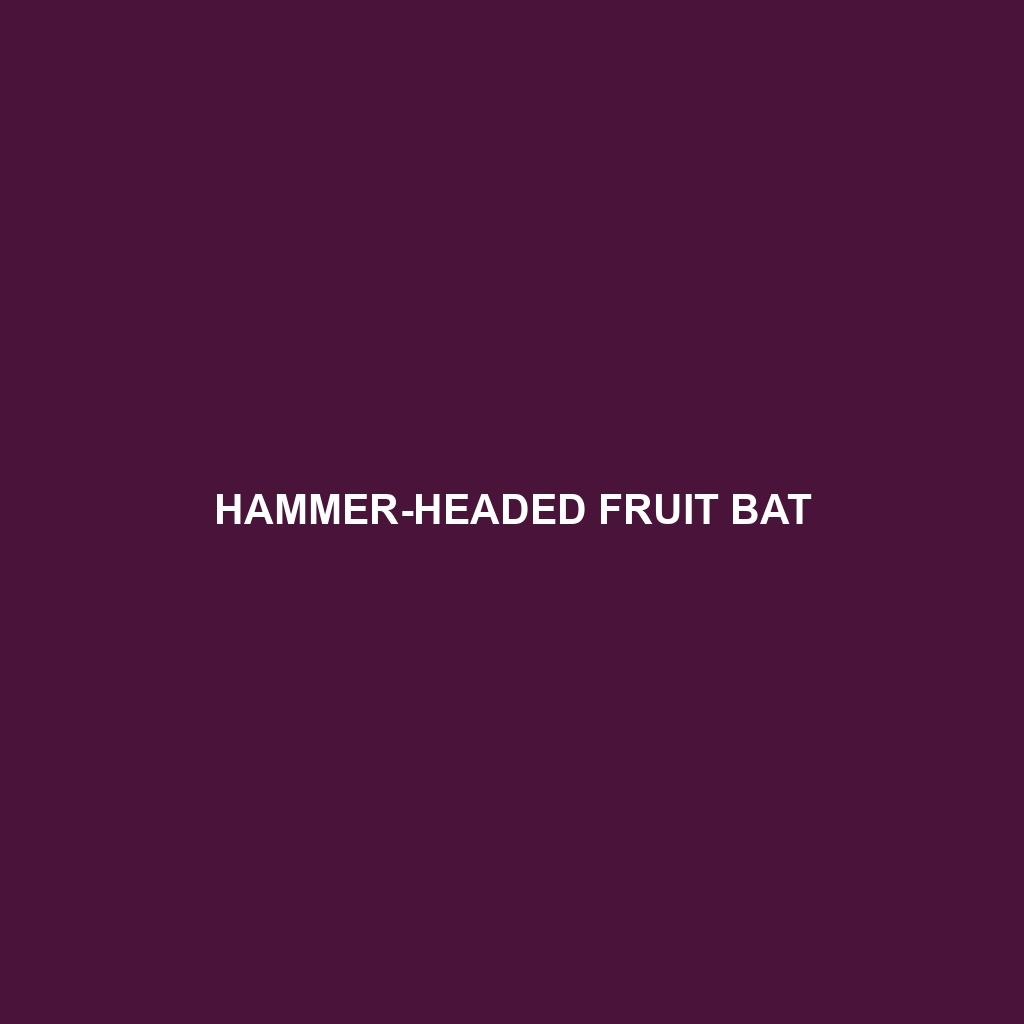Hammer-headed Fruit Bat
Common Name: Hammer-headed Fruit Bat
Scientific Name: Hypsignathus monstrosus
Habitat: The Hammer-headed Fruit Bat is primarily found in the tropical forests of Central and West Africa. Its range extends from Senegal and the Ivory Coast to the Democratic Republic of Congo, favoring dense, humid lowland forests and areas near rivers. This species thrives in environments with abundant fruit trees and stable temperatures, making it a critical species in these ecosystems.
Physical Characteristics: The Hammer-headed Fruit Bat is notable for its large size, with a wingspan that can exceed 1 meter (3.3 feet). Adult males typically weigh between 0.5 to 1 kilogram (1.1 to 2.2 pounds) and display a distinctive hammer-like head shape, which is more pronounced than in females. Their fur is generally dark brown or gray, with lighter underbellies. The males possess enlarged nasal structures used during vocalizations, which can be quite loud and are integral to their communication.
Behavior: Hammer-headed Fruit Bats are known for their social behavior, often roosting in large colonies in trees. They are nocturnal and spend their nights foraging for fruits. Their remarkable ability to find and consume ripe fruits plays a crucial role in seed dispersal in their habitat. Mating calls, which are deeply resonant, are a critical part of their behavior, especially during the breeding season when males are competing for females.
Diet: These bats are primarily frugivorous, with a diet consisting largely of figs, bananas, and other fleshy fruits. They play an essential role in their ecosystem as seed dispersers and contribute to forest regeneration. Their feeding habits help maintain the ecological balance by promoting the growth of various plant species.
Reproduction: The Hammer-headed Fruit Bat has a unique reproductive cycle. Mating typically occurs in the rainy season, with gestation lasting around 3 months. Females usually give birth to a single pup, which they carry while foraging. Parental care is crucial, with mothers nurturing their young until they can independently forage for food.
Conservation Status: The Hammer-headed Fruit Bat is currently classified as vulnerable on the IUCN Red List. Habitat loss due to logging, agricultural expansion, and mining poses significant threats to their populations. Conservation efforts are essential to ensure the survival of this unique species.
Interesting Facts: One fascinating aspect of the Hammer-headed Fruit Bat is its vocalizations; the males can produce a range of sounds that can be heard from great distances, attracting potential mates. Additionally, their social structures often involve complex interactions, demonstrating advanced social behavior for a bat species.
Role in Ecosystem: The Hammer-headed Fruit Bat plays a crucial role in its ecosystem. As a primary seed disperser, it facilitates the growth of various trees and plants in the tropical forests. Its activities help maintain plant diversity, which is vital for the overall health of their forest habitats. Furthermore, they serve as prey for larger predators, thus contributing to the food web in their ecological community.
